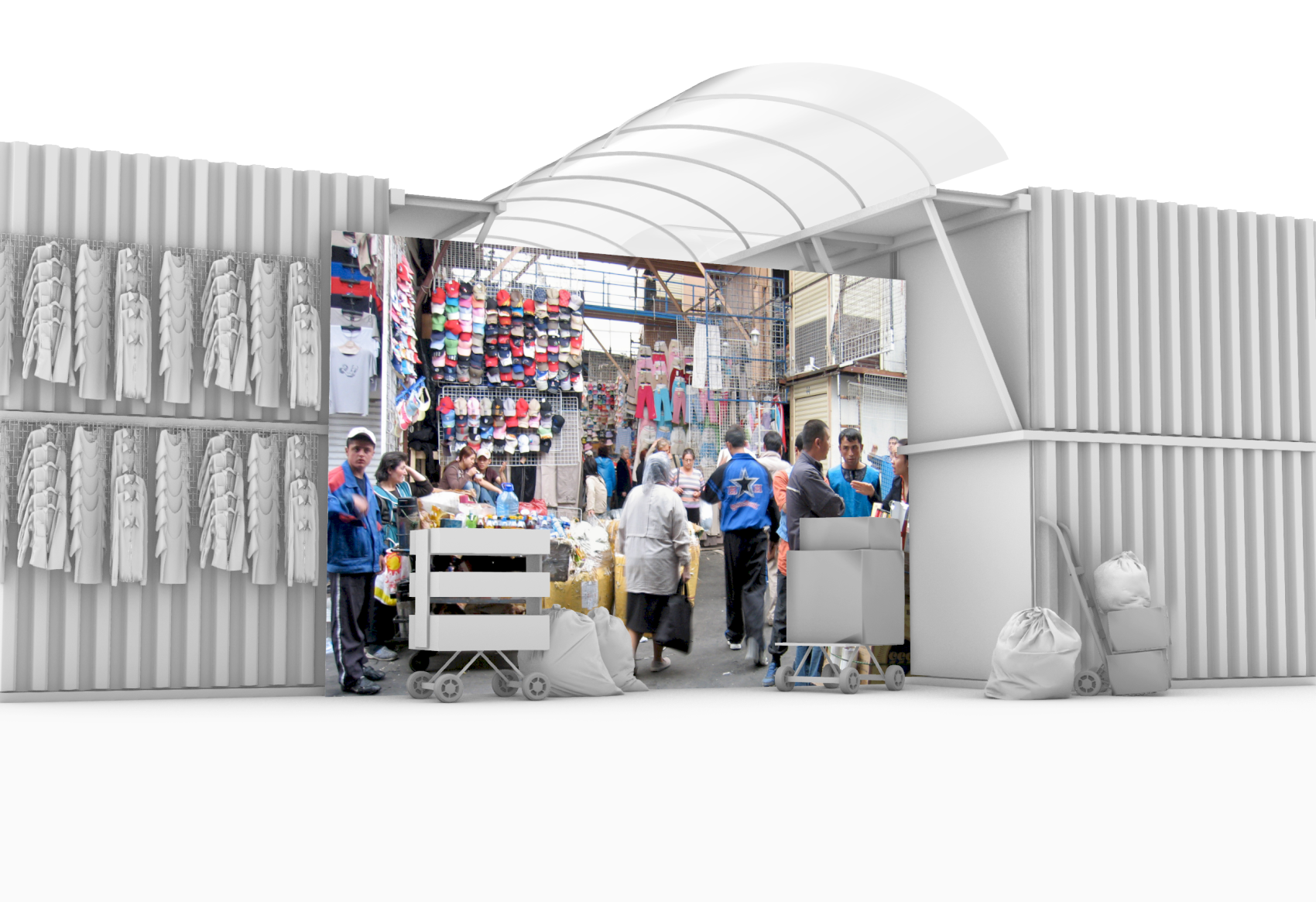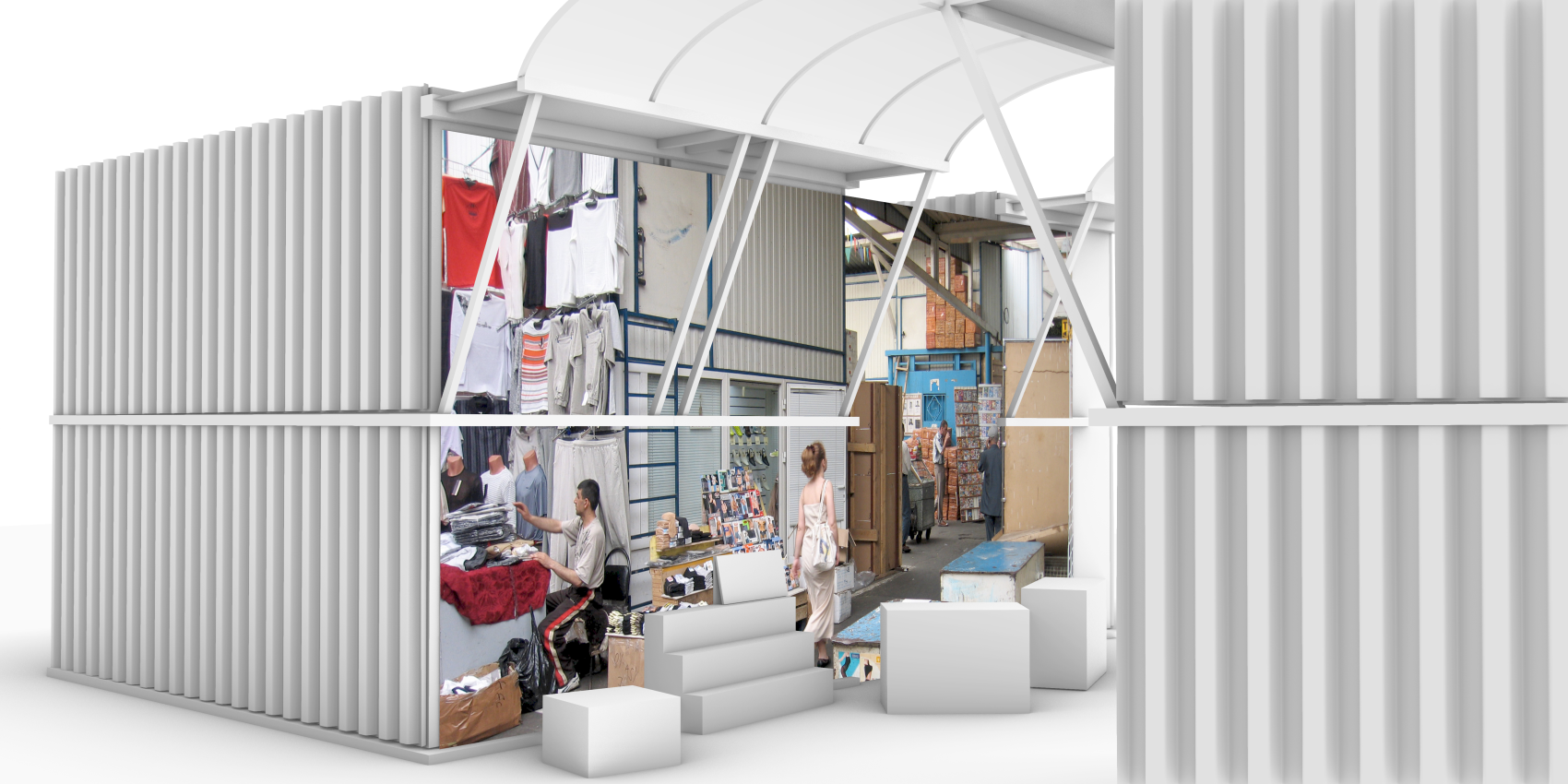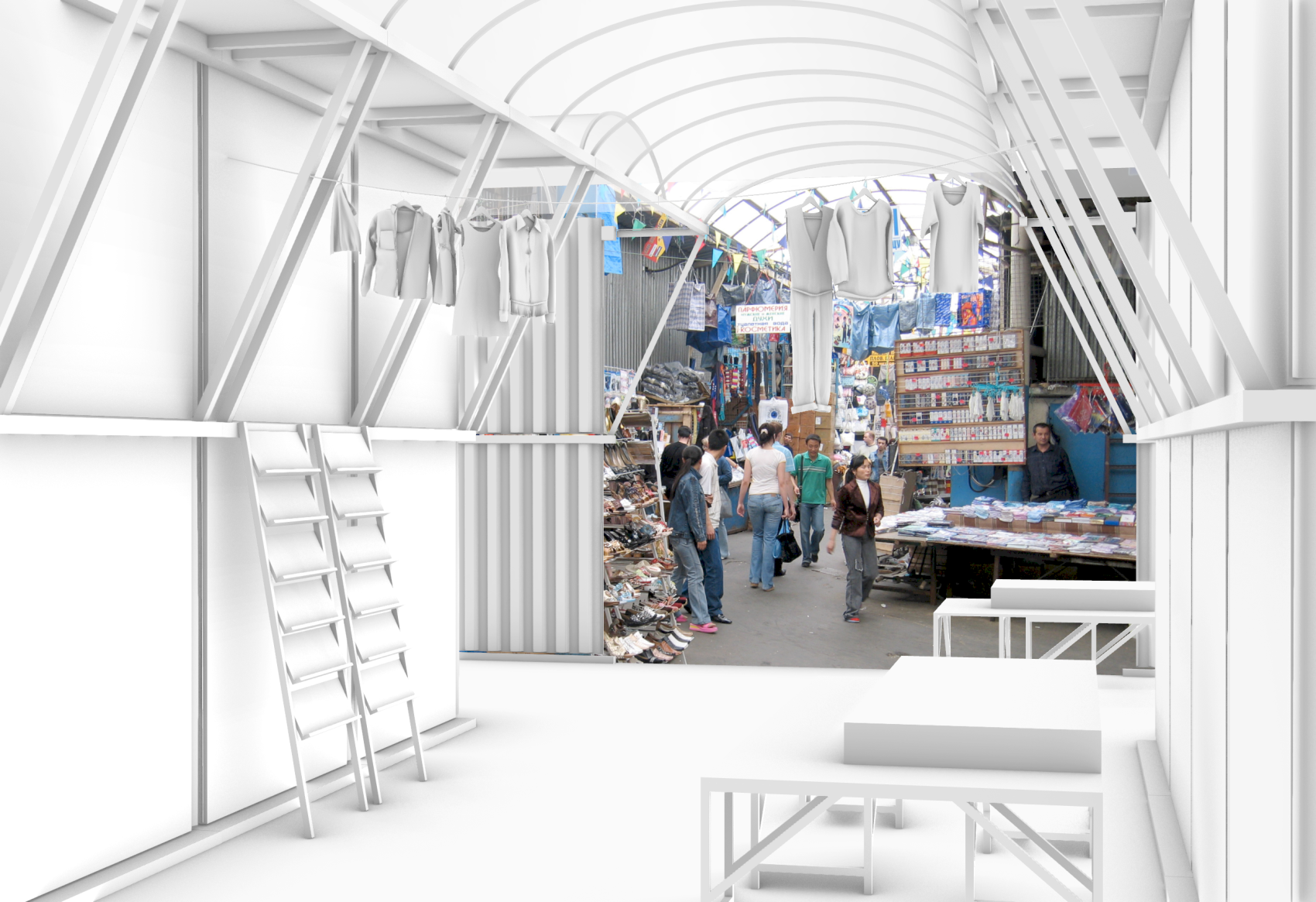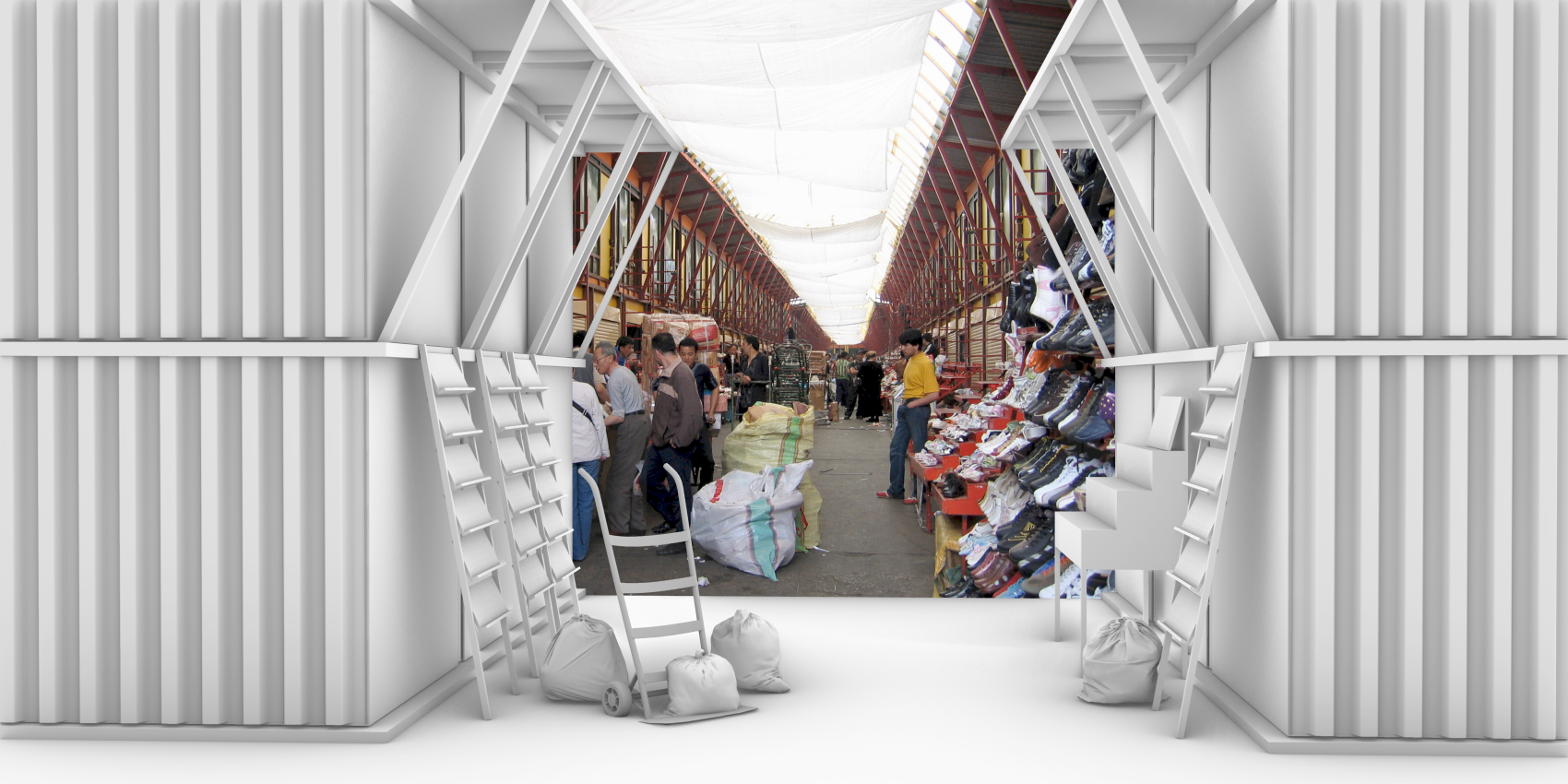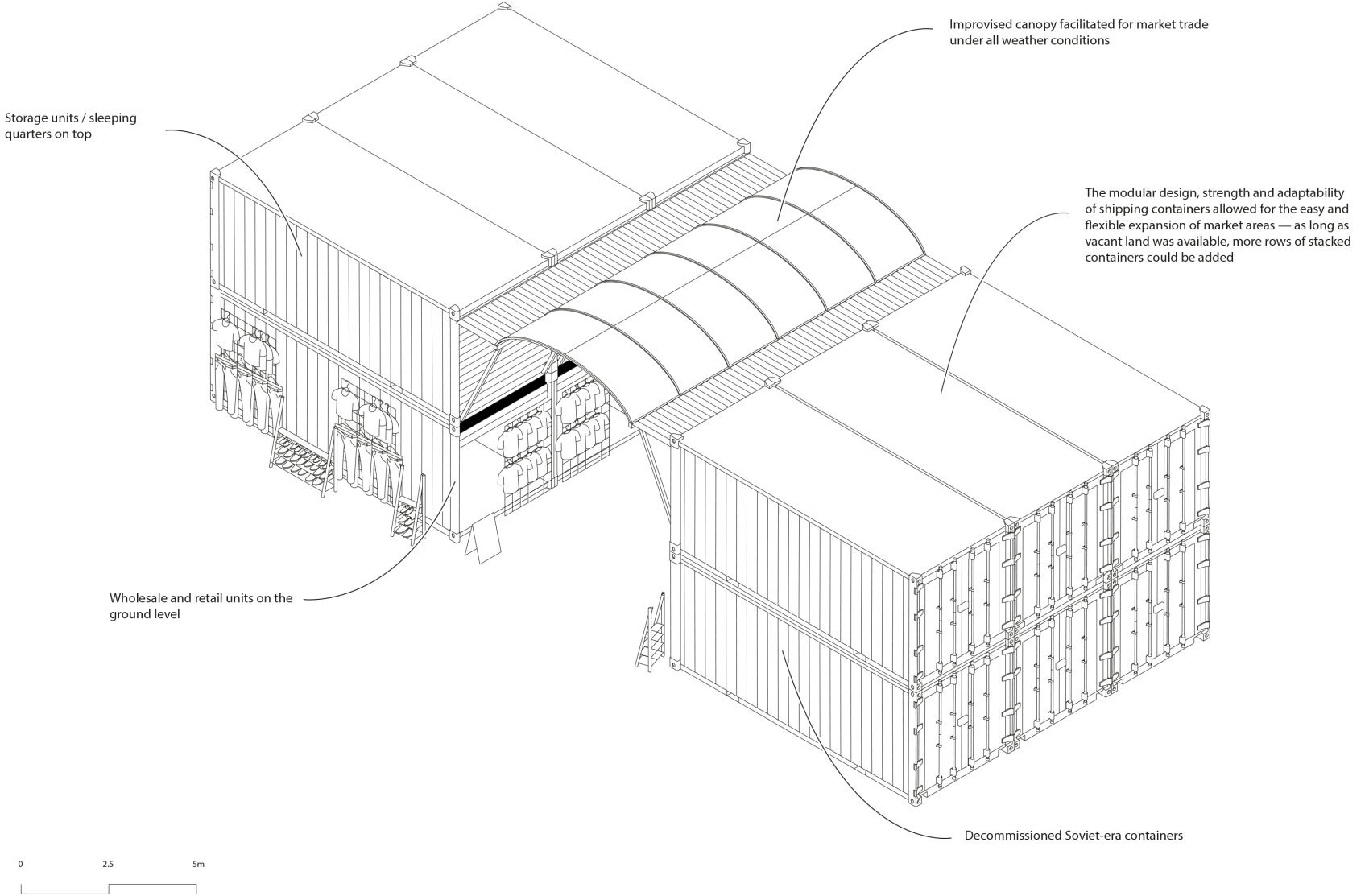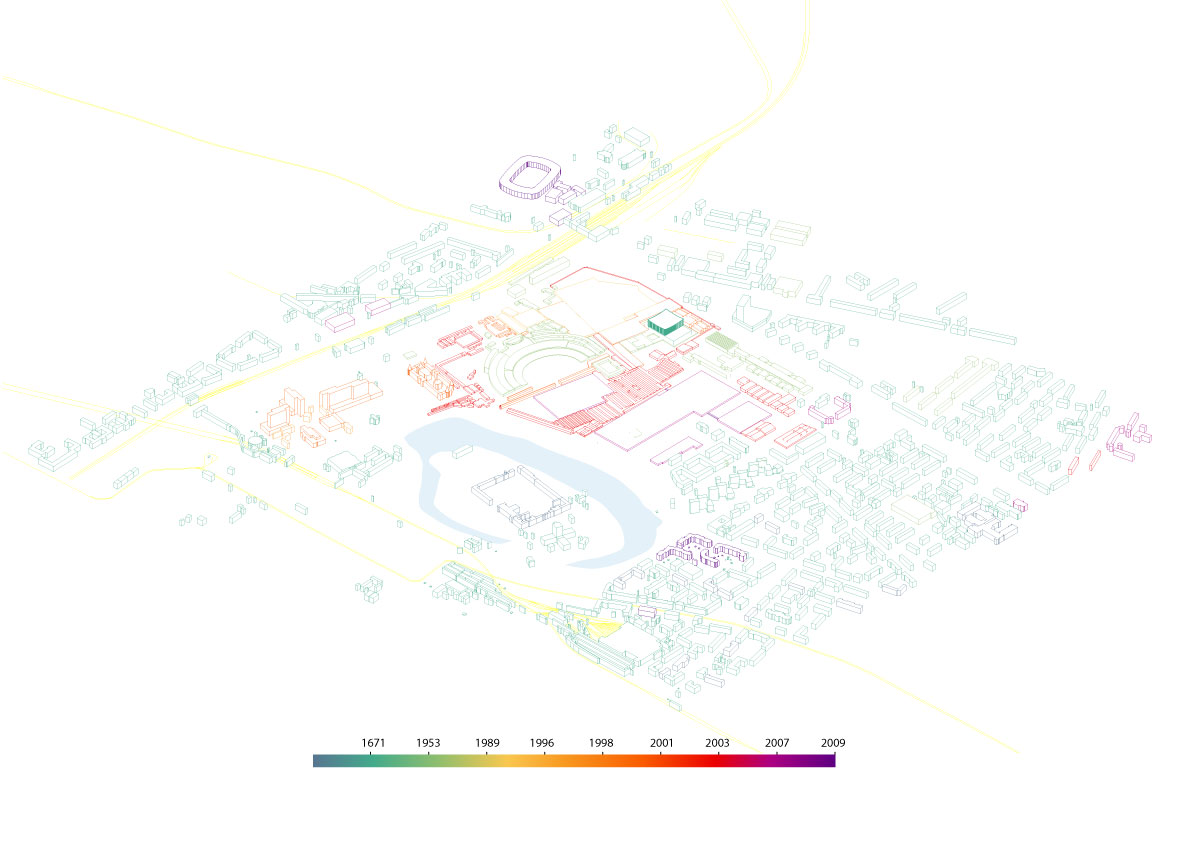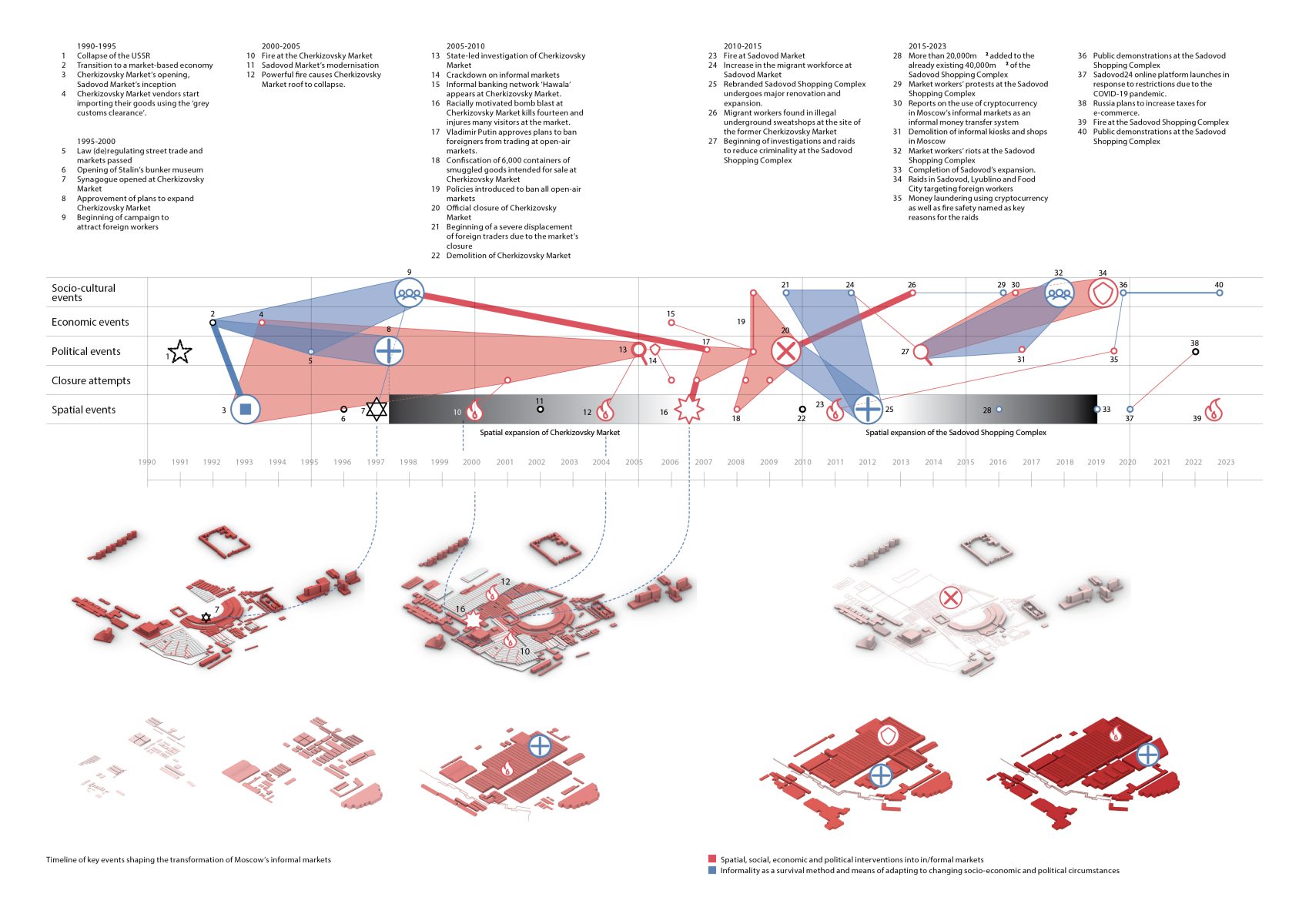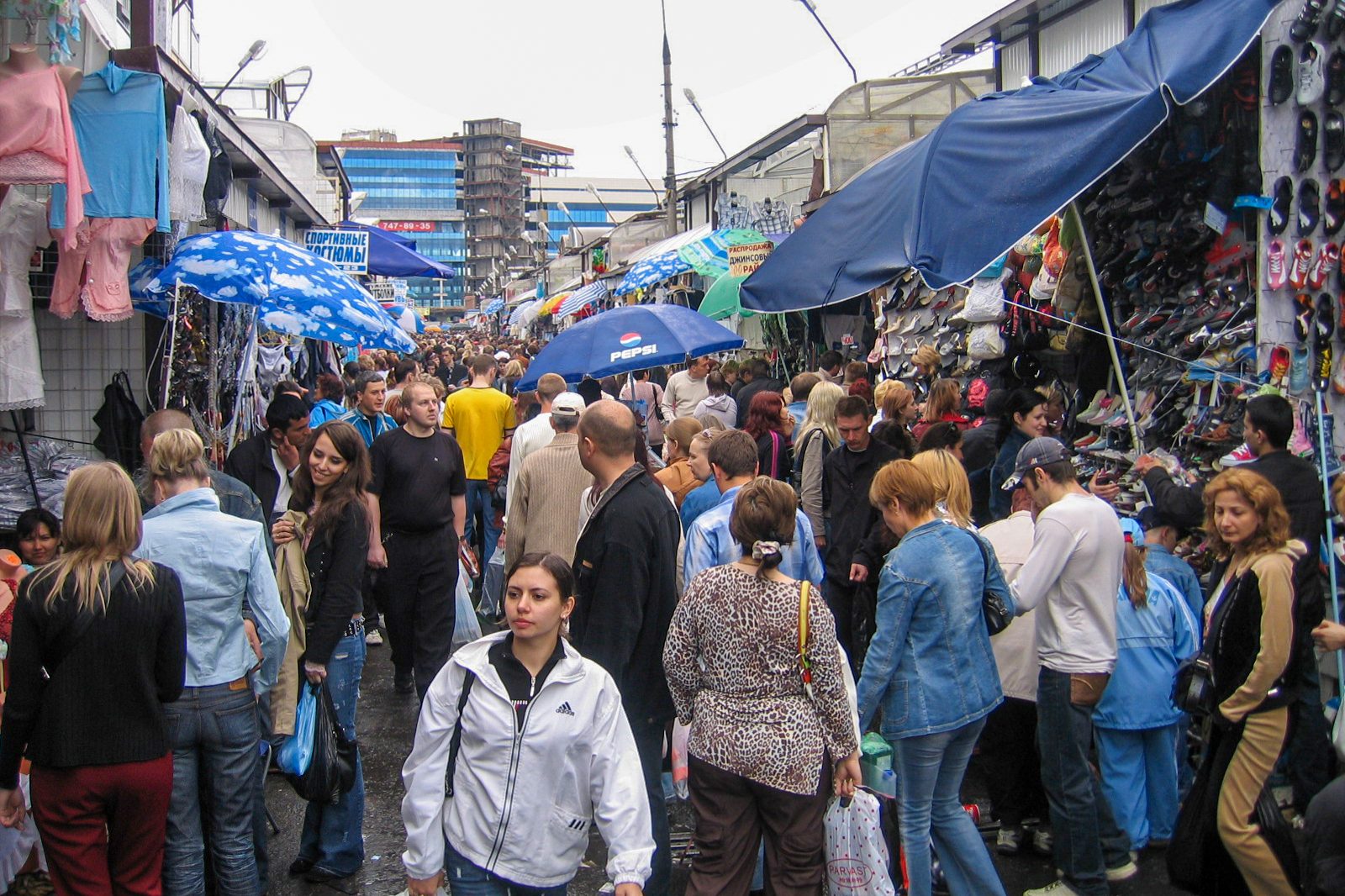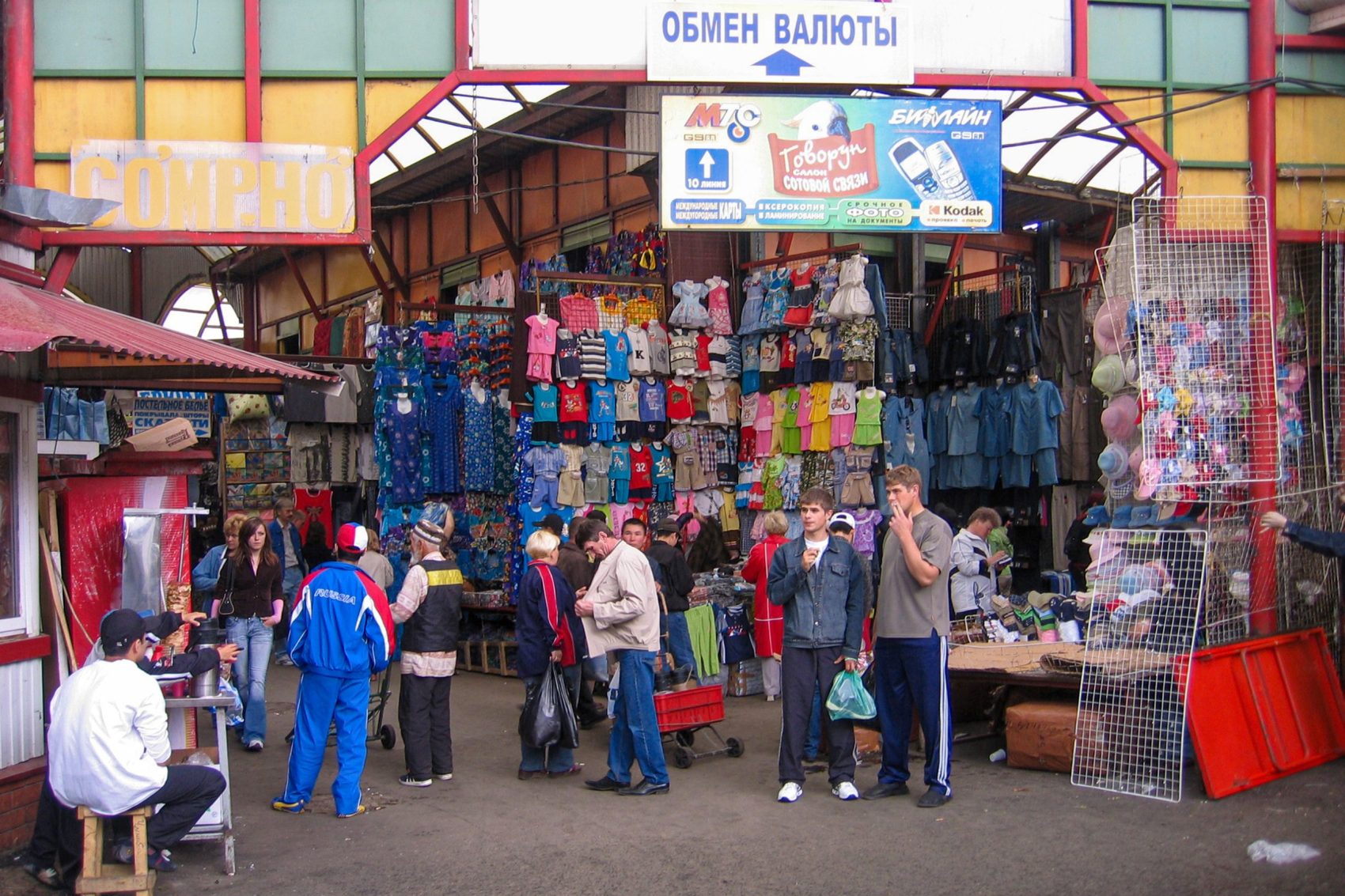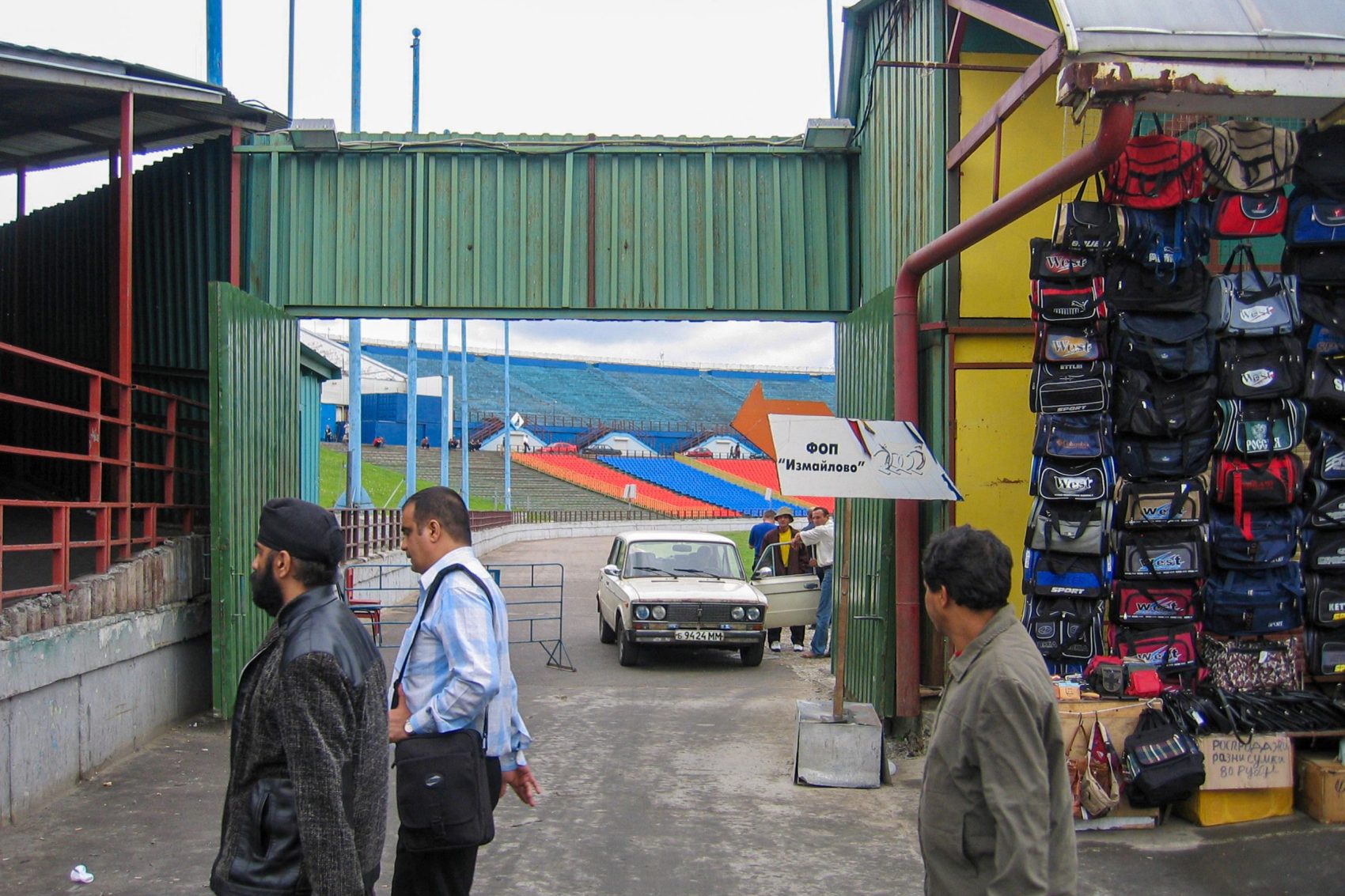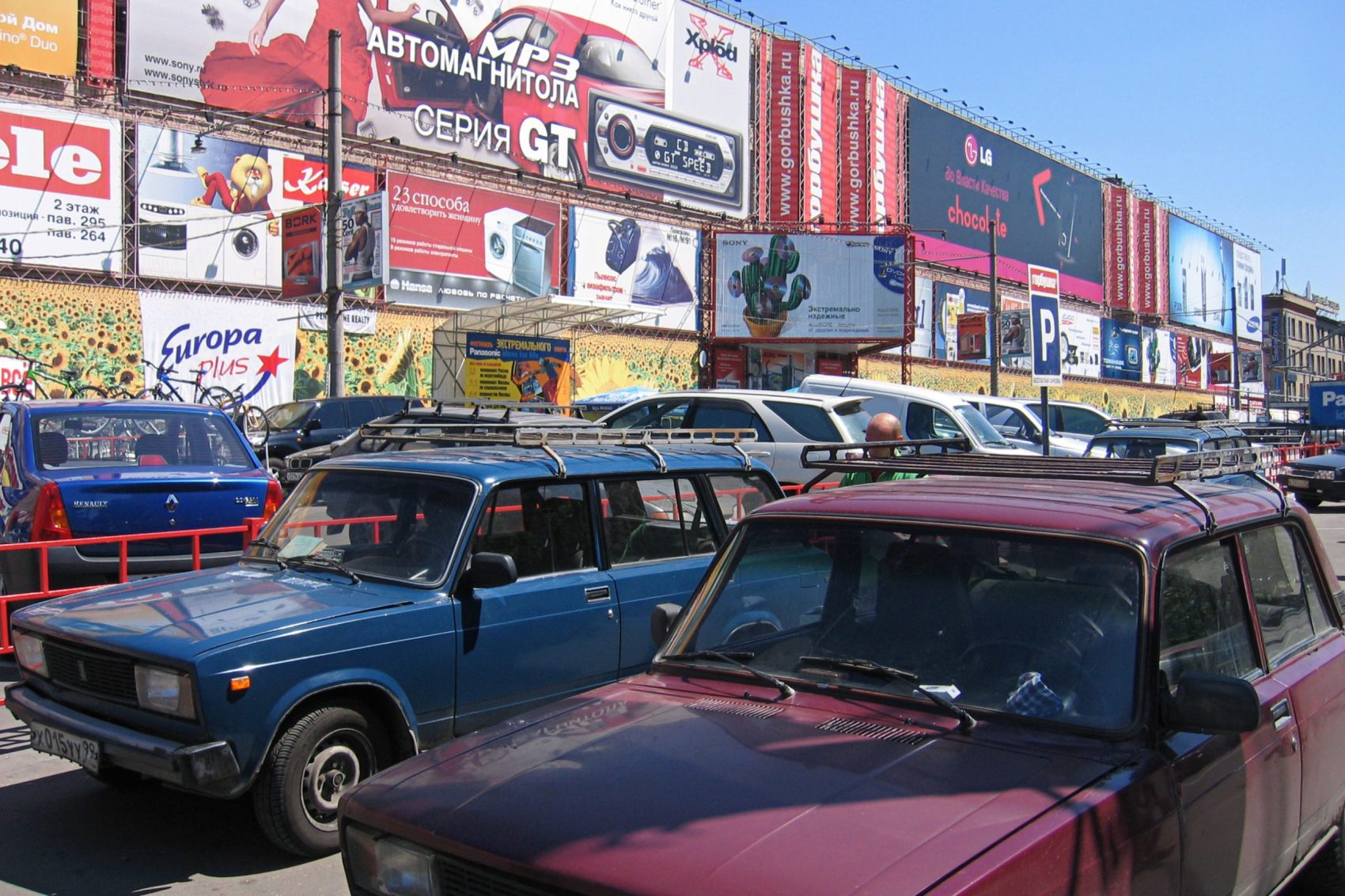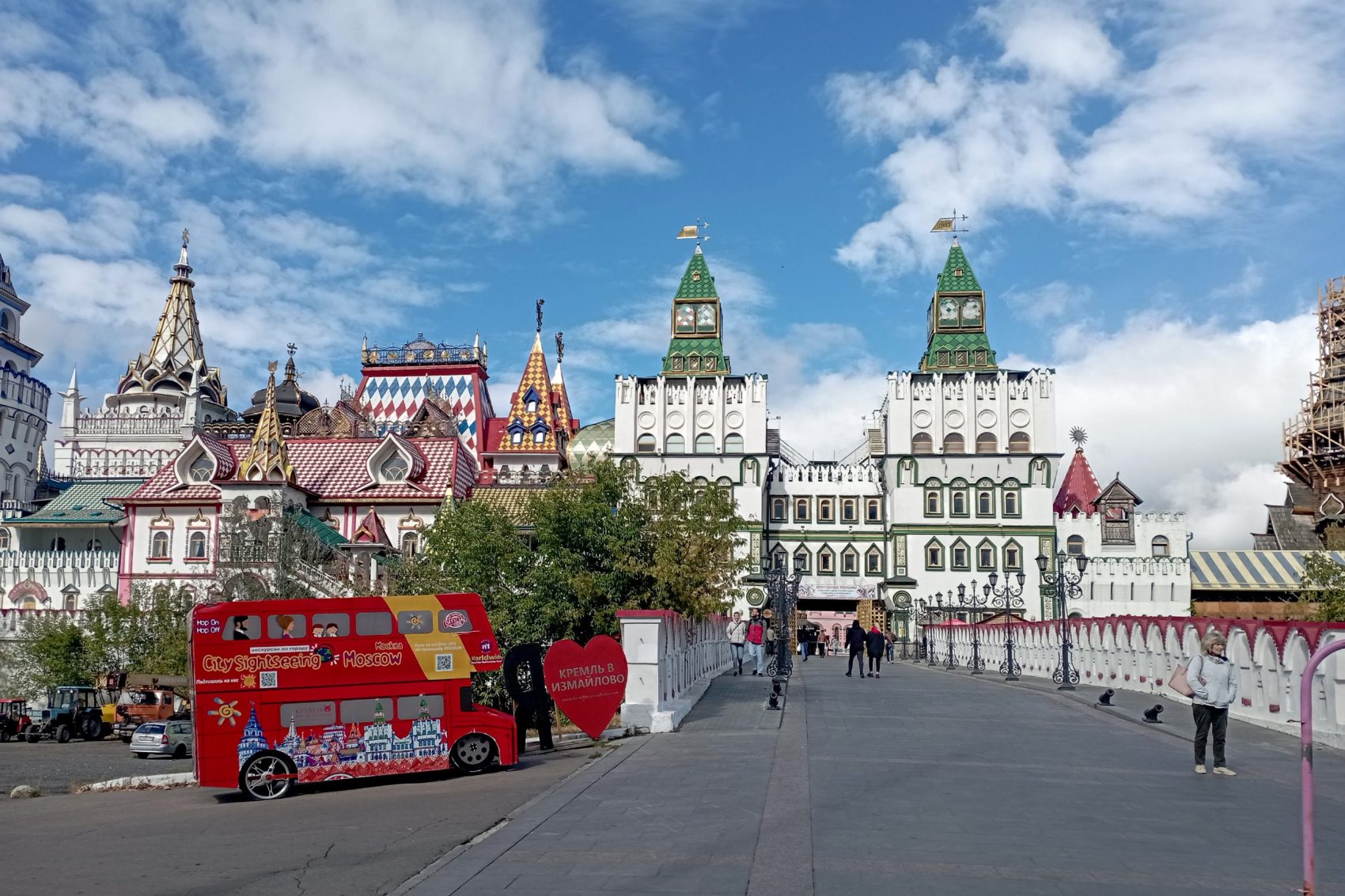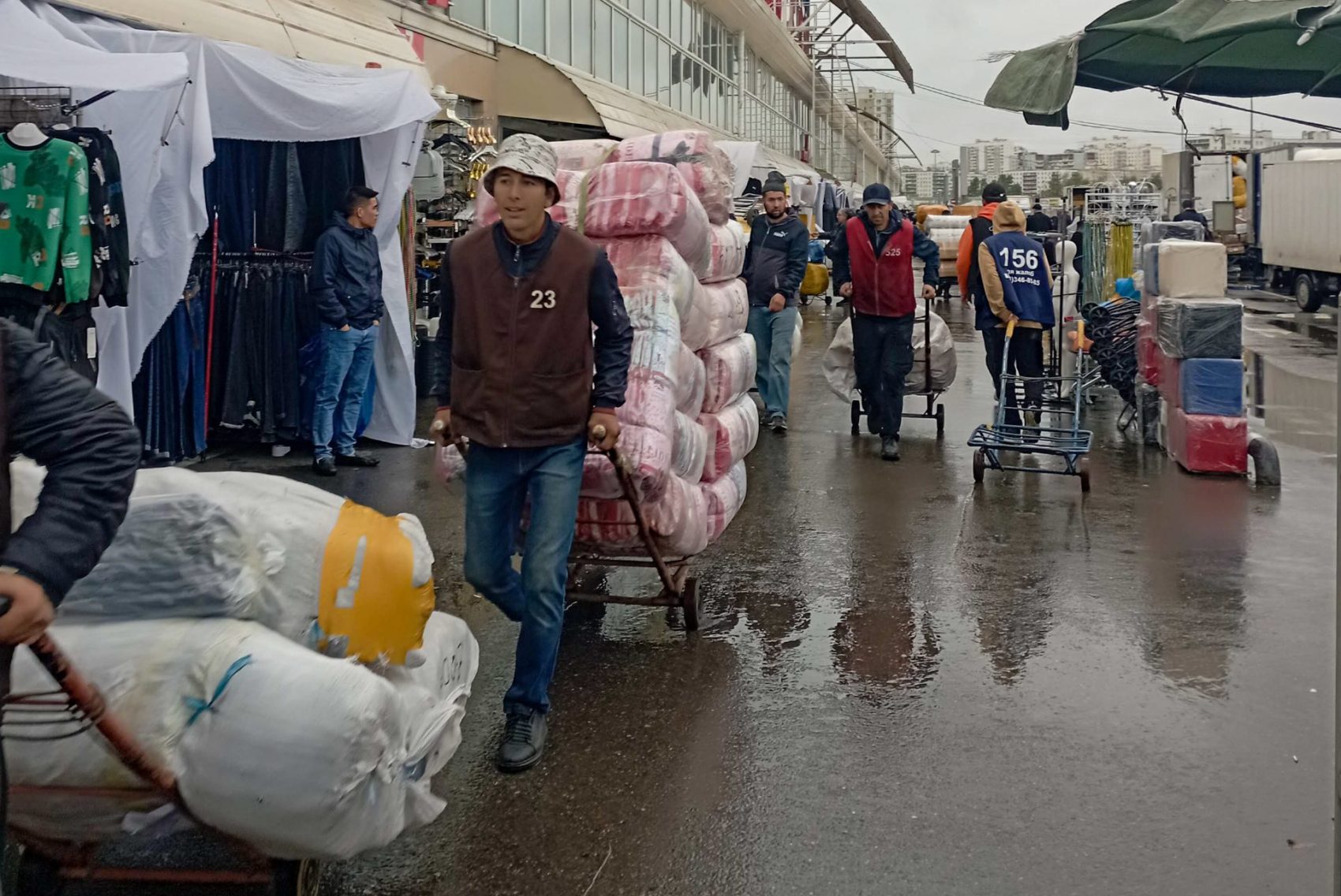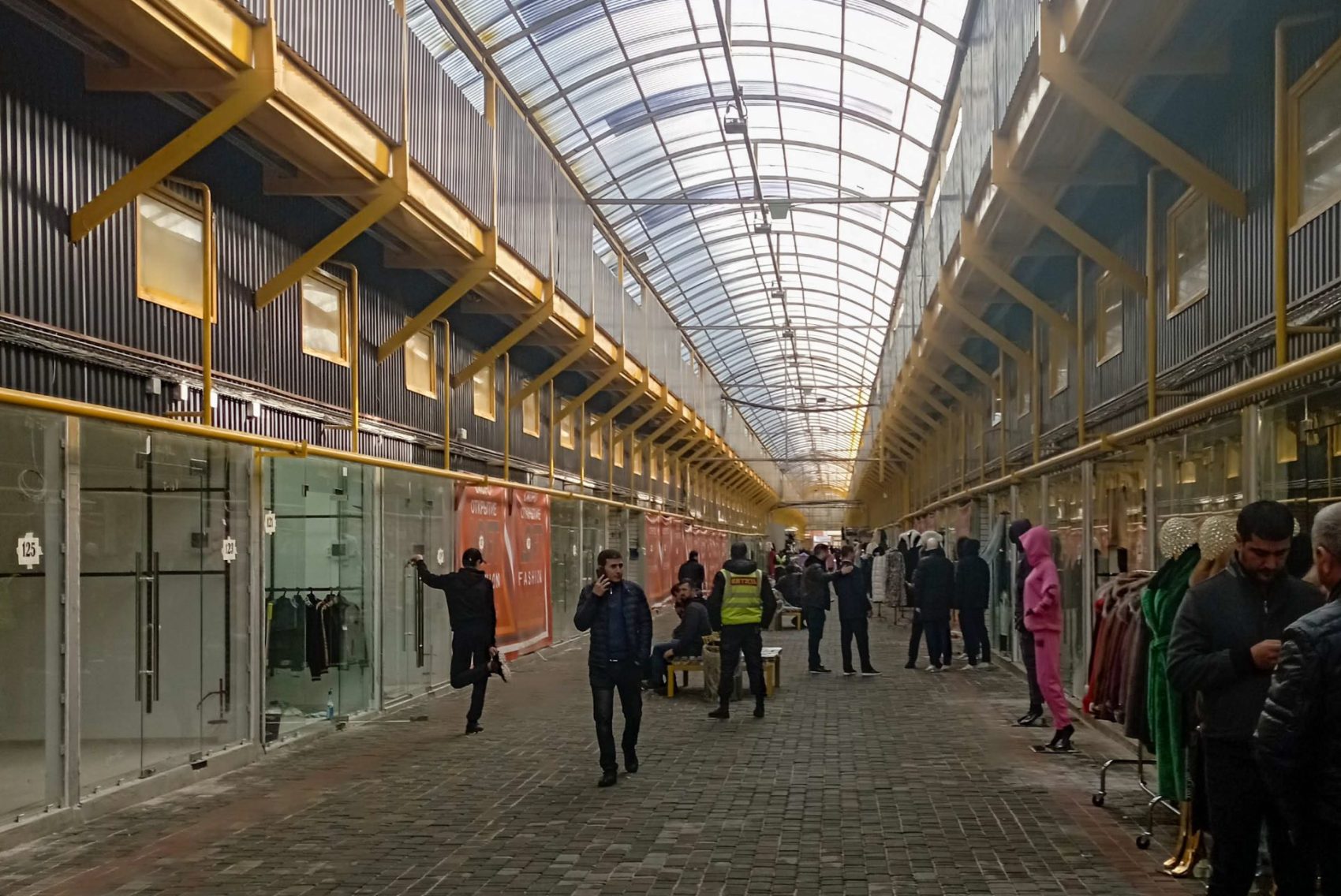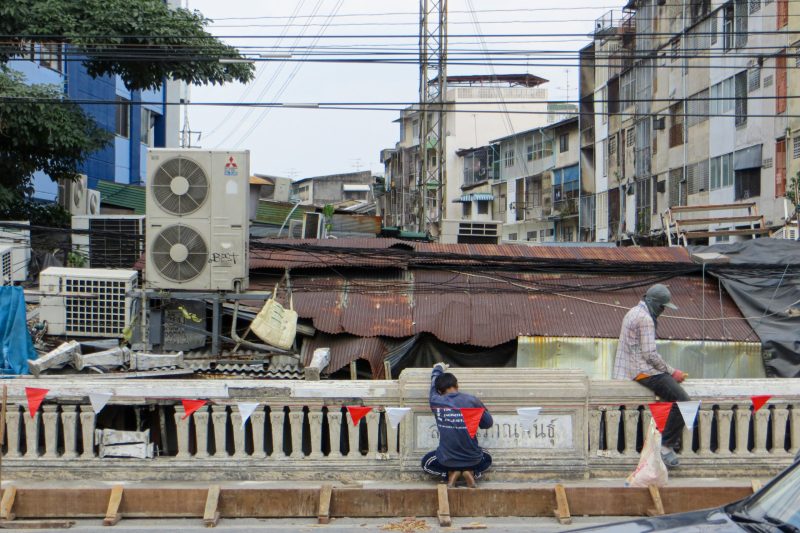- Forced Closure
- FWF
- 2018-2023
- Incorporating Informality
CASE STUDY: CHERKIZOVSKY MARKET
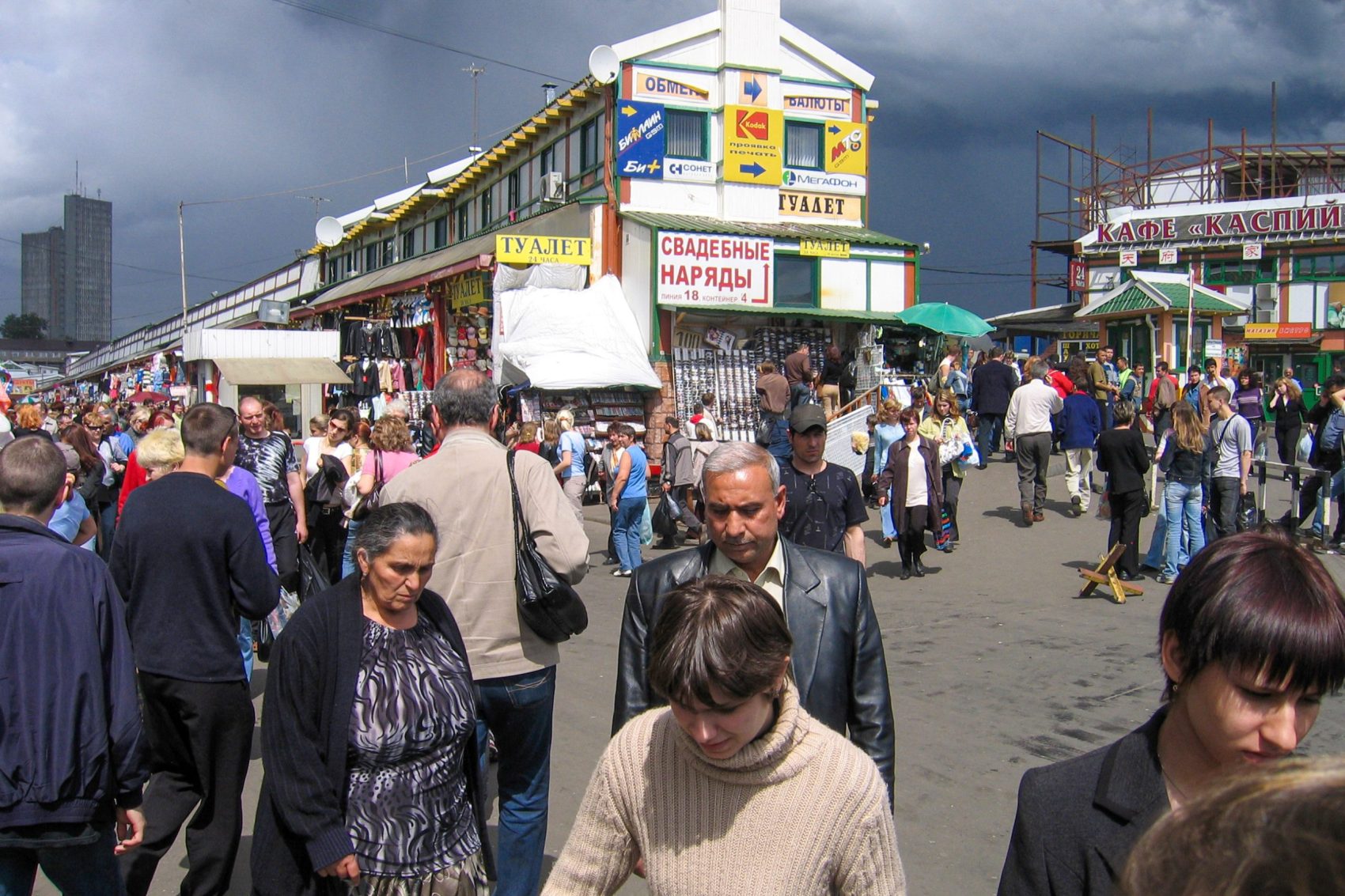
Cherkizovsky Market, Moscow, 2006
SPECTACLES OF PATRONAL CAPITALISM
The spaces of popular markets, such as the Cherkizovsky market in Moscow, provide critical stages or ‘scenes’ for these different spectacles for different audiences, and invariably function as echo chambers and conduits for geopolitical tensions, flows of experience, information, conflict and affective encounters.
Cherkizovsky Market emerged in the early 1990s in the Izmailovo district of Moscow near several majorhighways. The famous Market, nicknamed ‘Cherkizon,’ has become one of the symbols of untamed post-Soviet capitalism or the ‘wild nineties,’ the narrative of contrast and legitimation with the supposed ‘order’ of Putin’s regime and its ‘power vertical.’ Its closure and demolition are probably some of the most well-known border spectacles that claimed to consolidate the control over informal flows of mobile labour, commodities, and commercial capital.
The market covered an area of fifty hectares and leased much of the land from the Russian State University of Physical Education, Sport, Youth and Tourism. Shipping containers were repurposed and transformed into individual retail units. The containers were stacked and arranged in a grid-like pattern to create rows andalleys for vendors to set up their shops. Lower containers were used for display and direct sales, while upper containers were used for storage. By the time it was finally dismantled in 2009, it had grown into 15 specialised trading areas. By that stage, the market occupied an area three times the size of Kremlin and had completely engulfed the old Izmailovo stadium at its centre. New housing has been built on the eastern fringes of the site, though most of the land has since sat empty.
Location(s):Moscow, RUSSIA
On-Site Collaborator:ANTON NIKOLOTOV
Visualisations: BILAL ALAMELOVRO KONCAR-GAMULINJOANNA ZABIELSKA
Photography: ANTON NIKOLOTOV
PETER MÖRTENBÖCK
HELGE MOOSHAMMER
Results of this case study were published in:
The Central Stadium of the Soviet Union was never completed, but it was reconstructed and later served as one of the stadiums for the Soviet Olympic Games in the 1980s.
Cherkizovsky’s improvisational commercial urbanism and its massive labor force of 100,000 small businessmen and women, vendors, porters, and cleaners from all over the former USSR and beyond squatted this key site of the state’s political technology of governance, mass spectacle, and international superpower symbolism. Media coverage largely portrayed the closure of Cherkizovsky as bringing ‘order’ to the city and evidence of the crackdown on financial flows out of a country, illegal migration, and the reining in of unchecked oligarchs. Meanwhile, in 2009, thousands of traders had their stock confiscated and locked up in Cherkizovsky’s underground warehouses, where some claim it still remains. Most of these traders and market workers eventually relocated to the Sadovod and Moskva Markets, which are now controlled by a group of Ismailov’s former business associates.
By 2013, dozens of markets were closed across Moscow, as requiredby the updated Federal Law on Retail Markets to conduct trade in ‘capital structures.’ The government gave street kiosks and markets selling perishable goods a little more time to adapt and comply. In February 2016, to the shock of their owners, government workers bulldozed kiosks and shops overnightIn September 2006, one month after a bombing of the market carried out by the Russian radical nationalist group Spas, which killed 13 people and left 53 badly wounded, the vice speaker of Moscow City Council announced that the market would be closing at the end of 2006. While the owner’s good contacts with the government and the mayor led to repeated delays in the implementation of these plans, a ruling to restrictthe share of foreign workers at the market to 40 percent, which came into effect in April 2007, had a significant impact on the market as it did on many others. From Moscow to Vladivostok there were reports of markets collapsing completely. On 29 June 2009, the market was finally shut down by Russia’s consumer watchdog Rospotrebnadzor due to 464 alleged violations of fire safety regulations and after earlier raids had unearthed 6000 containers of counterfeit goods.
CONTRIBUTOR(S)
Anton Nikolotov is an independent researcher, multimodal anthropologist and art maker.

